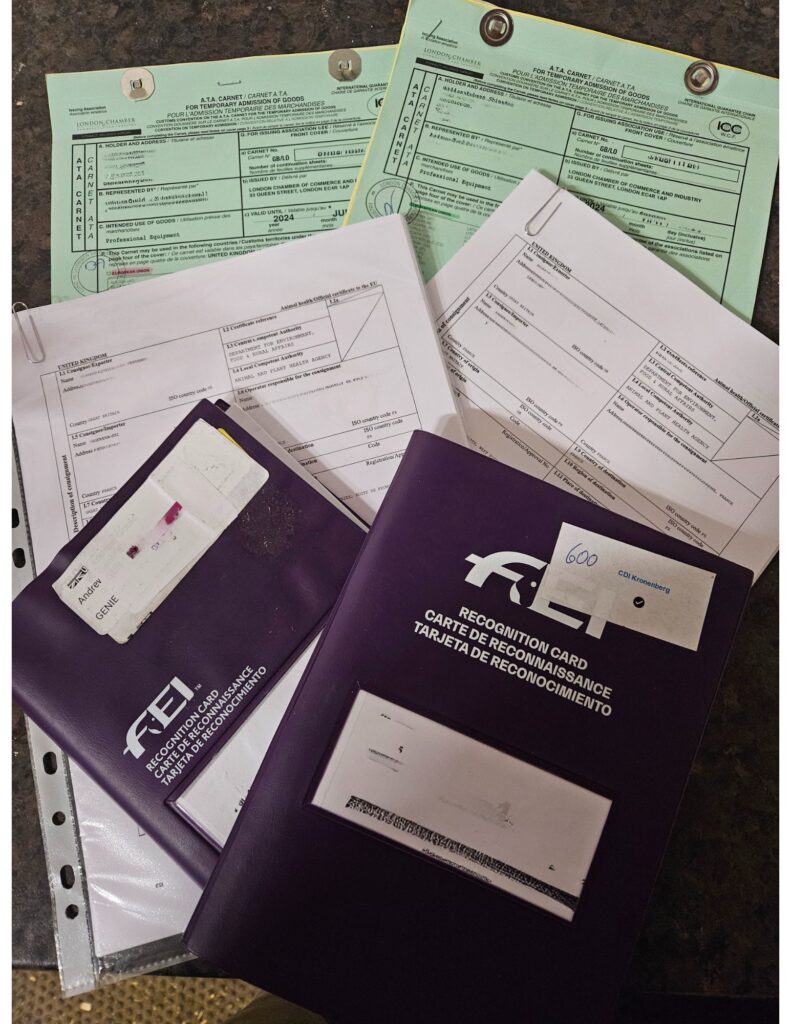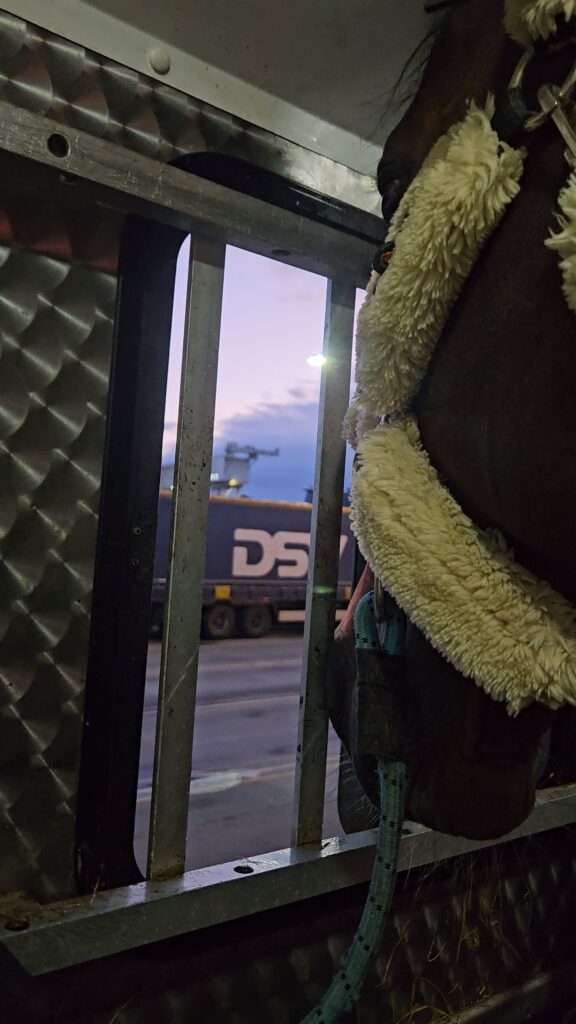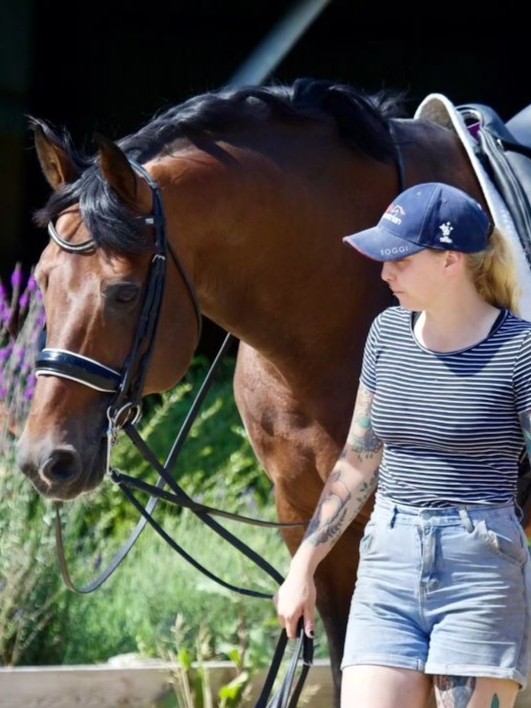When the United Kingdom officially parted ways with the European Union in January 2020, travel to European horse shows for British competitors (and European competitors to British shows) became exponentially more difficult–especially for the grooms organizing it all. The luxuries of easy travel that exist for members of the E.U. ceased, and entering and exiting the U.K. involves paperwork and thought akin to flying a horse to the United States. And according to the FEI, the cost of this movement has increased 300% in this post-Brexit world.
Horses require an Export Health Certificate (EHC) signed by an official vet and a purple FEI Recognition Card, classed as “registered with a national branch of an international organization for sporting or competition purposes,” for each trip to Europe. In addition, horses need to be tested for disease and quarantined prior to transport. And the transporters themselves have appropriate registration with the E.U.

British groom Natalie Campbell, who works for British dressage rider Andrew Gould, takes us behind the scenes of the border crossing process as she transports her horses to Le Mans, France, for a horse show. Campbell details her check list and what to expect from a groom’s perspective.
Things to Do Before You Leave the U.K.
- Coggins blood test within three months of travel date.
- Health papers completed by your vet the day before you travel.
- ATA Carnet for each horse. ATA Carnet is also called the “Merchandise Passport” and allows for the temporary entry of goods duty-free and tax-free. In regard to horses, the carnet specifies what you are transporting a horse and equipment, and they are for competition use. These documents last for one year or until you use up your trips. The max per carnet is 8.
- The carnets must be filled out and stamped before boarding the ferry, and after disembarking, on the way out and on the way home.
When You Arrive at Calais Border Control Posts in France
You must go to SIVEP–the Border Inspection Post–to have your horses checked by the French vets. This may take one hour or you may be stuck waiting for up to seven hours. Luckily, we have never done more than two. You must factor this into your journey, for your driving and for your horses, especially when the weather is hot. I always like to take extra mashes, water and hay.
Important to note: You CANNOT get the horses off here.

Time to Go Home
For going home you must apply for your health papers online. Normally they have a link or QR code in the show office. The vet will come to fill out health papers for your horse the day before travel.
Once you are used to it, it becomes easier to deal with. Most people, ourselves included, use a shipping agent to help with paperwork and booking crossings.
Helpful Links
Before crossing, check out the guidelines detailed by the FEI, British Equestrian and Newmarket Racehorse Transport to make sure you haven’t forgotten any step to the process. While this blog details a lot of what to expect, it may not cover everything you need to know.


